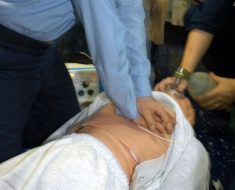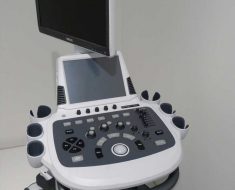
An interdisciplinary team led by University of Manchester scientists has adapted a technique originally developed to analyze data from stars to devise a way of accurately measuring the human body clock in hospital patients.
The development of the method called ClinCirc could one day help doctors to target patients at risk of long term health problems caused by clock disruption, which is thought to be common in patients admitted to hospital.
With the help of ClinCirc, the study concluded that body clock disruption is common in patients:
- Reduced blood clock oscillations were observed in half of intensive care patients. This was associated with high levels of inflammation.
- The body clock was shifted, like jet lag, in nearly all kidney transplant patients immediately after their operation.
The body clock is known to regulate how animals respond to infection and whether they develop disease, but until now it has been difficult to measure in patients. Shift work or jet lag is likely to break the clock, a potential explanation for why these activities are linked to diseases, including obesity and diabetes.
The test devised by the team measures blood clock dysfunction in patients. This clock was altered in nearly all kidney transplant recipients (22 patients) and half of patients (13 patients) admitted to critical care.
The team, which includes researchers from Exeter University and Manchester University NHS foundation Trust, say that it is too early to tell the medical implications of their results, however, researchers can now explore medical hypothesis involving clock dysfunction because they can tell the body clock time accurately.
ClinCirc, which involves a series of blood tests over 24 to 48 hours, is described in a paper published in the Journal of Clinical Investigation.
ClinCirc combines two existing mathematical methods: the Lomb-Scargle periodogram and cosinor analysis to determine whether specific genes follow a regular cycle of increase and decrease over 24-hours.
The investigators then used the technique to measure molecular oscillator “the body clock” in blood. This molecular oscillator is a core mechanism which drives many of the body clock outputs.
The method was used to measure the body clock in 13 intensive care unit patients at Manchester Royal Infirmary and Wythenshawe hospital, some of whom had inflammation.
It was also used to measure the body clock in 22 Kidney transplant patients, receiving anti-inflammatory drugs immediately after the operation.
Dr. John Blaikley from The University of Manchester and senior author on the study said, “We have proved that ClinCirc is a robust method which can enable us to characterize the patient’s body clock from blood samples.
“Using this system, we show that for many patients admitted to hospital their body clock may be altered by disease or the treatment they receive.”
Peter Cunningham and Gareth Kitchen both from The University of Manchester who performed the analysis of blood samples said “Other people have already shown that various hospital outcomes are affected by when they occur, therefore it will be interesting to see if this is linked by the alterations in the body clock described in this study.”
Professor Andrew Hazel, a mathematician based at The University of Manchester, developed and configured the ClinCirc mathematical method working with Callum Jackson, a Ph.D. student.
He said, “One of the great strengths of mathematics is that techniques originally developed for one application, in this case analysis of irregularly spaced astrophysical data, can be adapted to make progress in completely different areas of science.”
More information:
“ClinCirc identifies alterations of the circadian peripheral oscillator in critical care patients,” Journal of Clinical Investigation (2022).
Journal information:
Journal of Clinical Investigation
Source: Read Full Article





